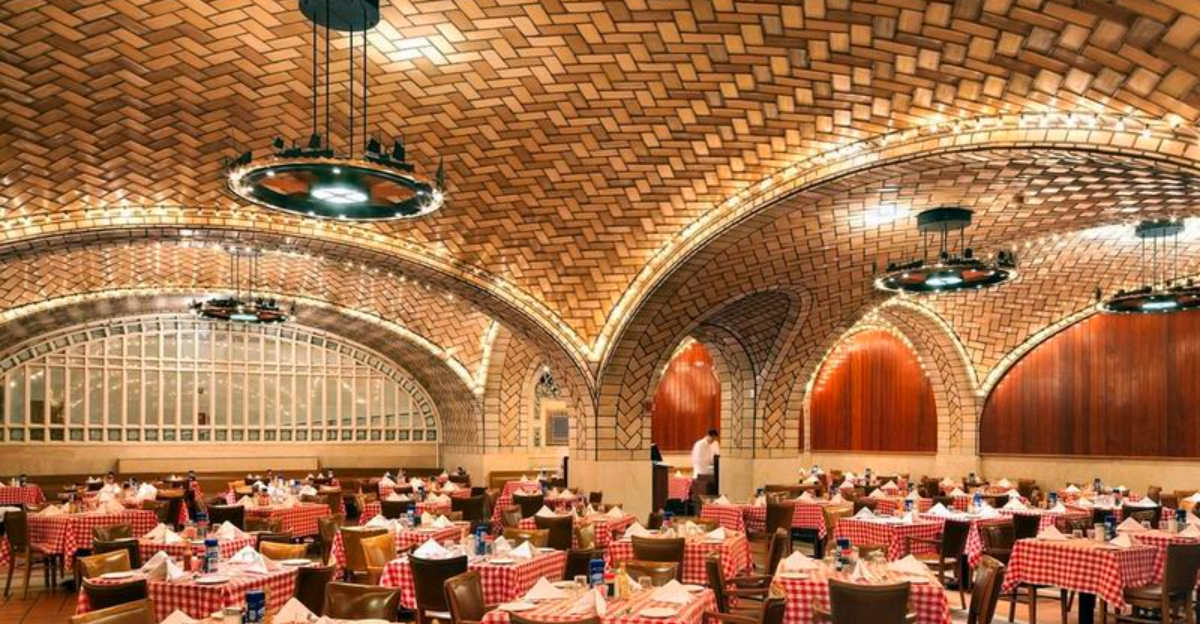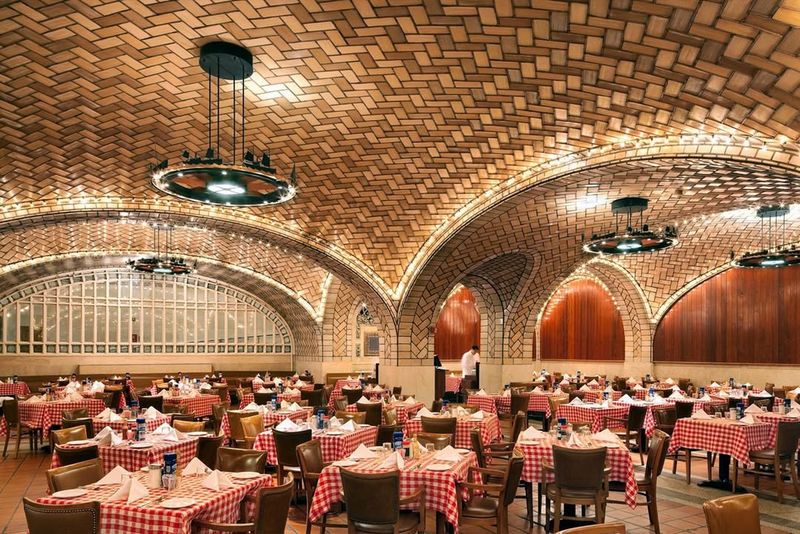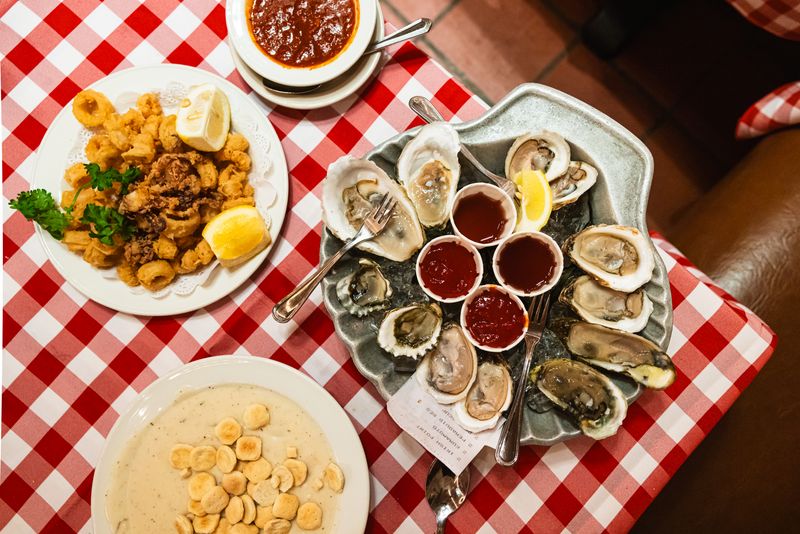The Grand Central Oyster Bar & Restaurant, a culinary gem nestled beneath the iconic Grand Central Terminal, has been a New York City landmark since 1913. Its rich history, architectural marvels, and renowned seafood offerings make it a unique blend of culture, flavor, and tradition. As you step into this storied venue, you are transported to an era where dining transcends mere sustenance, offering a timeless experience.
A Subterranean Oyster Institution
The Grand Central Oyster Bar & Restaurant opened in 1913, mere weeks after Grand Central Terminal’s unveiling. Located on the terminal’s lower level, it captivates with vaulted ceilings and terracotta tiles, crafted by Rafael Guastavino. Upon descending, a unique experience unfolds—a blend of daily transit, architectural wonder, and seafood tradition.
This dining hall links the everyday bustle of one of New York’s busiest transit hubs with culinary charm. The design and atmosphere transport patrons back in time, offering a rare glimpse into the city’s storied past.
The Oyster Bar serves as a bridge between eras, showcasing the elegance and timelessness that define New York City’s rich heritage. It’s not just a restaurant; it’s an integral piece of the city’s cultural mosaic.
The Architecture Meets Acoustics
Beyond the menu, the Oyster Bar’s design is unforgettable. The Guastavino-style tile vaulting serves both structure and beauty. Interestingly, the entrance ramp acts as a “whispering gallery,” where a whispered word travels clearly across the space.
This acoustic marvel adds to the charm, making dining here a sensory blend of echoing trains, conversation, and seafood sizzle. The whispering gallery phenomenon is a hidden gem, delighting visitors with its unexpected novelty.
The interplay of sound and structure enhances the dining experience, connecting patrons with the rich tapestry of Grand Central’s architectural delights. It’s a reminder of the thoughtful design that defines this historic venue.
A Menu Built on Oysters and Continuity
The Oyster Bar’s menu is a testament to tradition and variety. Featuring raw oysters, stews, and broiled seafood, it celebrates both the steadfast and the seasonal. Offering dozens of oyster varieties daily, it has built an enduring seafood reputation.
Despite economic changes, evolving tastes, and even a 1997 fire, the Oyster Bar remains a culinary cornerstone. It’s a resilient beacon, adapting yet retaining its essence within New York’s food landscape.
The blend of tradition and change is seen in each dish, making the menu a living document of culinary history. It reflects the dynamic nature of seafood, always fresh, always familiar—yet ever-evolving.
Why It Matters
The Oyster Bar weaves three strands: historic architecture, culinary continuity, and sensory immersion. The atmosphere merges architectural grandeur with a century-long recipe of seafood and hospitality.
Patrons range from commuters grabbing a quick meal to tourists seeking a landmark experience. Locals find a ritual of taste and place, linking transit, flavor, and tradition.
Dining here offers more than just a meal—it’s a journey through time and culture. The space echoes with history, flavor, and the daily rhythms of the city, making it an irreplaceable piece of New York’s vibrant tapestry.
The Timeless Charm
The Oyster Bar’s charm lies in its timeless appeal. Anchored in New York’s heart, it remains a beloved destination for seafood lovers and architectural enthusiasts alike.
The lively atmosphere, combined with historic elegance, draws patrons back time and again. Every visit offers a fresh perspective, a new favorite dish, or a cherished memory.
Its resilience and allure exemplify the spirit of New York itself—ever-changing, yet steadfast. A visit to the Oyster Bar is like stepping into a living museum, where history and hospitality harmonize beautifully.









